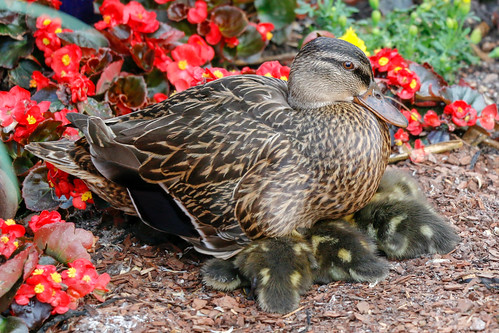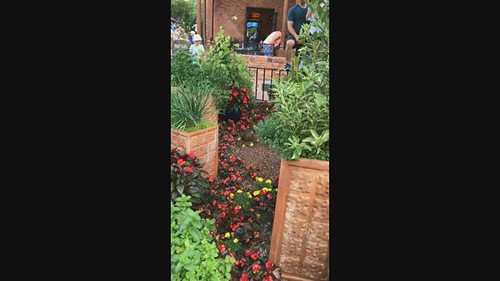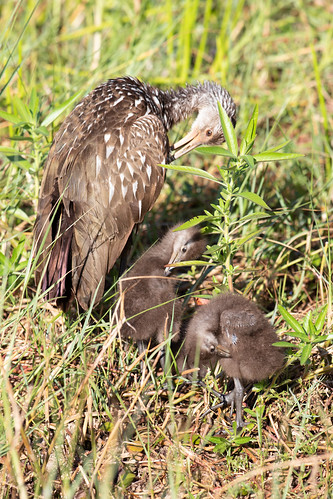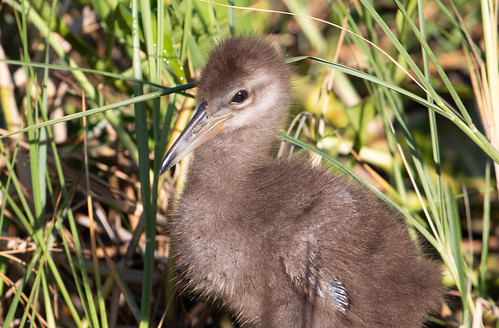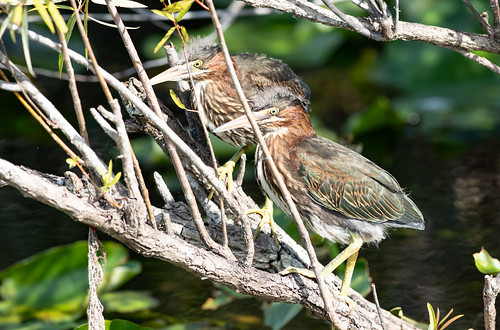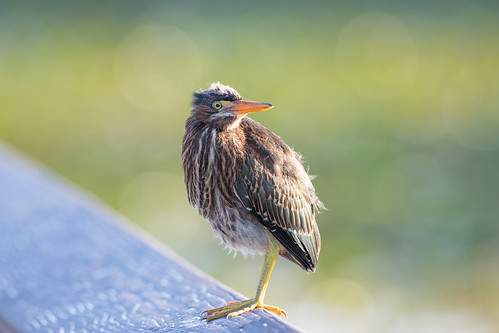I’m writing this on May 8, 2019, as snow is falling from the sky and sticking on the ground. Even as the biggest surge of migration is yet to come, a pair of chickadees are nesting in my apple tree, already laying eggs or maybe even incubating, and crows and Song Sparrows and some of our other local residents are also starting to nest. The chickadees shouldn’t have too much trouble—it’s not supposed to get all that cold and they nest in a snug little cavity. Birds usually have a pretty easy time dealing with a bit of bummer weather—it’s us humans who develop unrealistic expectations and romanticize spring.
This year I’m doing way too much of that, especially after coming home from Florida, where the daytime temperatures were consistently in the upper 80s into the 90s. That kind of weather is why Florida birds are way ahead of the ones up here. I saw lots of baby birds down there.
I know I have an over-active maternal drive, becoming emotionally invested whenever I make eye contact with a chick. That was obvious the day I took a video of domesticated ducklings—the intensity of my emotions when a turtle grabbed one, and my relief when the mother duck attacked and saved the day, surprised me.
When we were spending time with our son in Orlando, we got to see and photograph a brood of Mallard ducklings—the individuality of the little guys made me think about McCloskey’s classic Make Way for Ducklings, appreciating why the book has appealed to so many readers over generations. The two videos I made of the little family have been extremely popular—apparently just about everyone loves baby ducks.
I was hoping we’d see one or two Sandhill Crane families down there—I don’t have any photographs at all of baby cranes. We didn’t even see any adult cranes, but the morning before we drove down to the Everglades, Russ and I came upon a brood of three baby Limpkins at Kissimmee Lakefront Park.
Limpkins belong to the same order as cranes, and like crane chicks, the little guys were fluffy, engaging, and photogenic. We stopped by the park again our last day in Florida, and Russ and I were extremely relieved to find the whole family again. I’m not the only one who gets invested in baby birds.
That first day at the park I’d also come across a baby Common Grackle in dense vegetation along the shoreline—I felt a surge of joy to find that little one again our last day. The world has plenty enough grackles, but I wasn’t looking at populations. I was seeing one unique individual—a tiny being to be reckoned with—and was happy that it was given at least a few more days on this planet.
There were loads of baby gallinules—too many to focus on any single one, fortunately, because an alligator swallowed one right in front of me. That happened so quickly that I found myself thinking more about the parents and other chicks scrambling out of reach. It’s a jungle out there.
In the Everglades, we came upon a few baby Green Herons hanging out and even making tentative flights— they were moving around so much that I couldn’t keep track of which were which.
All these babies were filling me with so much joy that it’s hard to believe that a couple of other baby birds topped them all—babies belonging to the species that the Anhinga Trail was named for. But that's a topic for another blog post.
